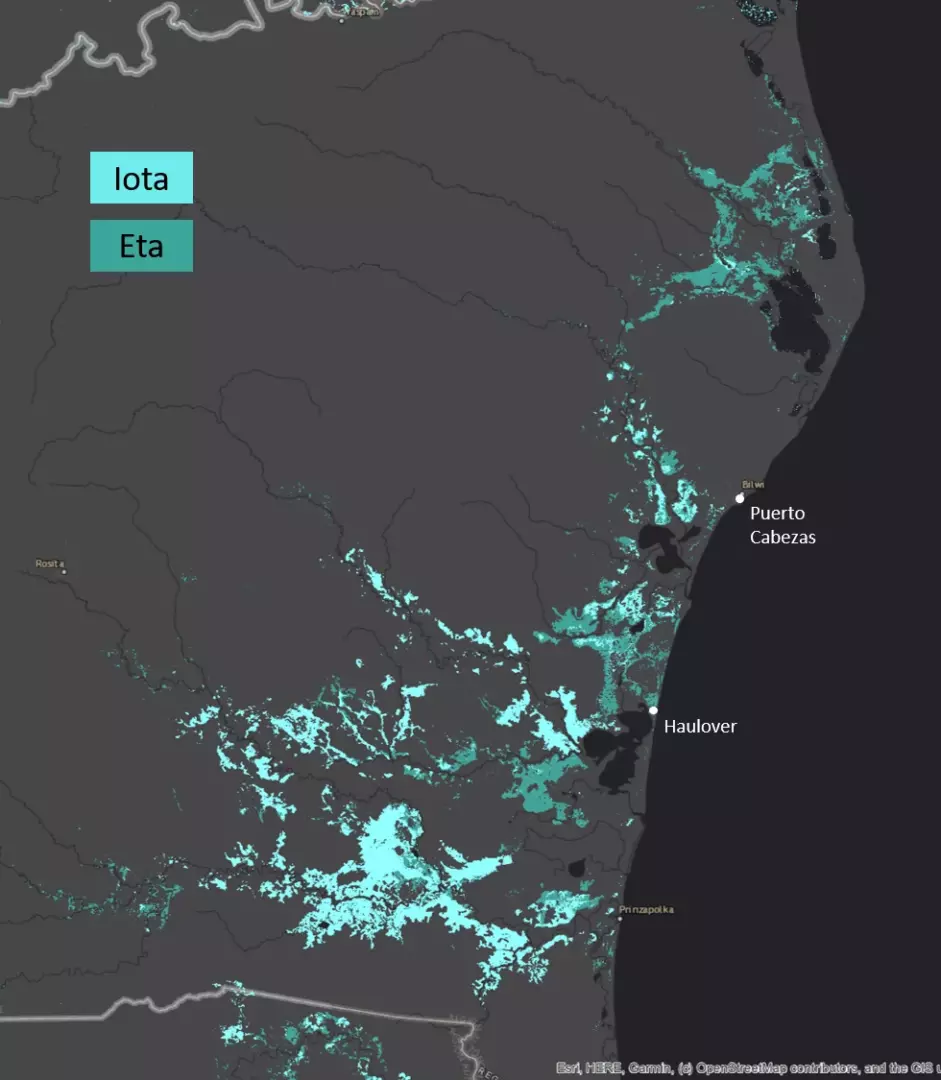Last week we shared our analysis of the devastating flooding in Central America following Hurricane Eta that came ashore in northeastern Nicaragua on November 3rd. At this exact time last week, Hurricane Iota made landfall as a strong Category 4 only 15 miles south of where Eta hit, lashing its powerful winds and rain over populations that were still trying to recover from Hurricane Eta.
Eta was a deadly, erratic, long-lived, and powerful Category 4 hurricane that killed at least 178 people, left 115 people missing, and became the second-most intense Atlantic hurricane on record, only behind the 1932 Cuba hurricane.
Fortunately, Hurricane Iota weakened significantly after coming on land. However, parts of the northeastern areas of Nicaragua still felt its full force with heavy rain over the coastal areas of Nicaragua. This can be seen in the map above published by the USAID.

PlanetWatchers flood map of Iota (light blue) and Eta (darker blue). The coastal area has been hit hard by both storms with more flooding to the south by Iota. Eta hit on November 3rd near Puerto Cabezas and Iota on November 17th near Haulover. Contains Copernicus data 2020.
We have followed up on our earlier analysis of Eta and analyzed the associated flooding from Iota, focusing on the Northeastern parts of Nicaragua.
Our analysis of Sentinel-1 Synthetic Aperture Radar data (European Space Agency) captures the scale of both floodings that was caused by Eta and Iota. By analyzing this all-weather data source it is possible to obtain near real-time insights on flooding even through thick cloud cover.
Our flood map (top) focuses on the Nicaraguan coastline where the two storms came ashore, it can be seen that Iota caused large-scale flooding in areas to the south of the major flooding caused by Eta.
This fact is aligned with the track of the two storms which was almost identical in where they made landfall, but Eta has changed its track northward while Iota has continued its track to the west.

PlanetWatchers summarise the mass flooding across the coastline of Nicaragua, worse hit by the two subsequent hurricanes. Contains Copernicus data 2020.
Our thoughts and prayers are with everyone who has been impacted by these devastating weather events and we hope that no more lives will be claimed.
Focusing exclusively on crop insurance in North America, PlanetWatchers tells the story of every field saving our customers time and money by enhancing policy and claims validation.